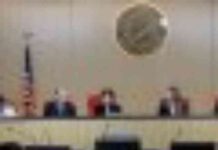A major shift in the Los Angeles Unified School District has occurred as a cellphone ban was implemented across approximately 800 schools. This decision drew a variety of reactions from students, parents, and educators alike, yet the transition appeared to be relatively smooth with no significant issues reported. The ban encompassed not only cellphones but also smartwatches and any other devices capable of sending messages or accessing the internet. Although this move was not groundbreaking in the education sector, it positioned L.A. Unified at the forefront of a larger national and global trend towards restricting cellphone use in schools.
Impact on Education and Student Behavior
Eleven-year-old Kaya Tejano, a sixth-grader at Walter Reed Middle School, expressed her support for the ban, emphasizing the importance of focusing on learning rather than being distracted by phones. Her perspective echoed the sentiments of many who believe that limiting cellphone use in educational settings can enhance students’ concentration and engagement in lessons. The ban allowed phones to be used on school buses but prohibited their use during lunch or breaks, giving schools the autonomy to determine how devices should be managed or stored.
Despite the lack of clearly outlined consequences for violations, the broader ban went into effect sooner than the deadline outlined in the California Phone-Free Schools Act. While concerns were raised by some parents regarding safety and emergency situations, the general sentiment seemed to lean towards acceptance and understanding. School board President Scott Schmerelson acknowledged parents’ apprehensions but emphasized the need to prioritize an undisturbed learning environment over potential disruptions caused by cellphone use.
Challenges and Adaptation
As schools prepared for the implementation of the ban, various approaches were taken to enforce the new rules. Some campuses had already initiated the ban prior to the official rollout, with positive feedback from both students and teachers. Alberto Carvalho, the superintendent of L.A. schools, highlighted the positive impact on student concentration and academic performance resulting from reduced distractions in the classroom. However, the transition was not without its challenges, as evidenced by students attempting to circumvent the policy by trying to break open magnetic pouches or falsely claiming not to have a phone.
Jessica Kelly, president of Friends of Reed, a school support group, underscored the detrimental effects of excessive cellphone use on students’ social interactions and academic focus. She emphasized the need for parents to recognize and address their own reliance on phones to communicate with their children during school hours. Conversely, some parents, like Meghan Gohil, expressed concerns about limiting a valuable learning tool, citing examples of educational uses of phones in music and science classes. The debate surrounding the ban reflected a broader discussion on balancing the benefits and drawbacks of technology in educational settings.
The ban covered approximately 800 schools in the district, with exceptions made for adult education and early education programs. Half of the schools opted for the honor system, while the rest implemented various strategies such as magnetic pouches or designated storage areas for phones. Despite the challenges faced during the initial phase of the ban, Carvalho emphasized the importance of establishing new routines and behaviors that align with the restrictions. By gradually integrating the ban into daily school life, he anticipated a smoother transition and a more focused learning environment for students.
In conclusion, the implementation of the cellphone ban in L.A. schools marked a significant step towards creating a conducive educational environment free from distractions. While the decision elicited mixed reactions from stakeholders, the overarching goal of enhancing student focus and academic performance remained at the forefront of the initiative. As schools navigate the challenges and opportunities presented by the ban, the ongoing dialogue surrounding technology use in education continues to evolve, shaping the future of learning in the digital age.




